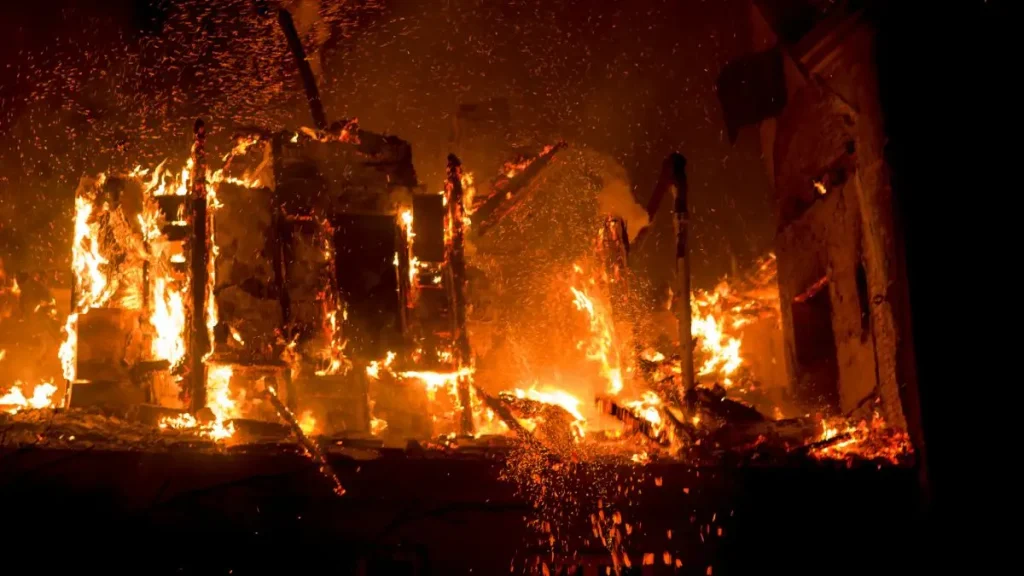Madison House Fire Leaves Cat Dead, Residents Unharmed
I was going through local updates when this caught my eye: a house fire broke out late Tuesday night on Madison’s east side. It happened around 9 p.m. on Hollow Ridge Road—right in a quiet residential area where you’d expect people to be winding down for the night, not facing an emergency.
According to the fire department, smoke and flames were already pouring from the front and side of the house when crews arrived. Within five minutes, they had the fire under control.
No one was home at the time. And thankfully, no human injuries were reported.
But not everyone made it out. A cat was found dead inside.
That detail hit hard—not because it’s unusual, but because it’s exactly the kind of loss people overlook when they hear “no injuries.” For a lot of us, pets are family. Losing one this way is gutting.
What do you think? Does your fire safety plan include your pets? Tell me in the comments—I’d love to know how others are preparing.
A Fast Response That Still Ended in Loss
You know what’s wild? Fire crews got there fast—like really fast. According to WMTV 15 News, they were called to the home just before 9 p.m., and they had the flames under control in five minutes.
Think about that—five minutes is barely enough time to boil water. But in that short window, smoke had already filled the house. And somewhere inside, that cat didn’t make it out.
No one else was home, so no human lives were at risk. Still, it makes you think: even with a solid fire response, things can go wrong fast—especially for the ones who can’t speak or open doors.
Similarly, a man was found dead after a house fire in Clayton, showing that even occupied homes aren’t always spared despite fire crews doing everything right.
What Caused the Fire? That’s Still Unclear
Right now, fire investigators haven’t shared the cause. They’re still looking into it.
But if you’ve ever seen how fast fires can move, you know it doesn’t take much. A faulty wire. A candle left burning. Even something simple like a charging device overheating can spiral out.
What hits me is this: the house was empty. No one’s home. And still, something sparked enough to light it up. That’s the part that makes you check your own space twice.
When’s the last time you tested your smoke detectors or unplugged something before heading out?
In fact, just a few weeks ago, a deadly fire in a Maine home left one person dead despite quick response—these incidents may be scattered, but they paint a serious pattern.
Why Cats—and Other Pets—Struggle to Survive Fires

Here’s the truth most people don’t talk about: pets don’t react to danger like we do.
When smoke hits, cats often hide. Under beds. In closets. Behind furniture. Their instinct is to stay low and still—which sadly makes it harder for first responders to spot them during a search.
According to the American Veterinary Medical Association, over 40,000 pets die in house fires each year, mostly from smoke inhalation. And most of those fires start when the humans aren’t even home.
It’s heartbreaking, but it’s not surprising. Our pets trust that they’re safe where we leave them. Fires change that in seconds.
Losing a pet in a fire is something no one should ever have to go through. Have you ever faced a close call with fire or lost a pet this way? Share your story in the comments—it could help someone else prepare better.
How to Fire-Proof Your Home—For Your Pets, Too
If you’re like me, your pets aren’t just animals—they’re part of the family. So here’s what I’ve learned over the years about keeping them safe:
- Keep pet carriers near exits — not packed away in a basement
- Window decals help — especially ones that tell firefighters how many pets are inside
- Close doors when you leave — this slows down fire spread and can buy them more time
- Never leave open flames unattended — even something small like incense
- Secure loose wires or cords — cats love chewing, and it’s a hidden hazard
You don’t have to go overboard. But thinking about pets in your fire plan can make all the difference.
I came across a safety update earlier this week through a WhatsApp channel that regularly shares quick fire prevention tips and real-time local alerts. Honestly, having those bite-sized reminders pop up has changed how I think about everyday risks—especially with pets at home.
Are House Fires Like This Becoming More Common in Madison?

I had to ask myself—was this just a one-off, or are house fires happening more often around here?
Turns out, this isn’t the first time Madison’s faced something like this in recent months. I came across at least two other recent incidents that tell a bigger story:
- A fire in Pierce County earlier this summer killed a 76-year-old in a care home.
- Over in Freeport, firefighters managed to rescue pets from a kitchen fire that broke out overnight.
These cases aren’t always headline grabbers—but they add up. According to local data from the Madison Fire Department’s annual reports, unattended cooking, faulty wiring, and overloaded outlets are the top culprits in residential fires.
And with more people working odd hours or relying on tech-heavy setups at home, the risk just keeps creeping up.
I’m not trying to scare anyone—but it’s worth asking: how fire-safe is your home, really?
And just recently, in Kennewick, two firefighters were treated for heat exhaustion after battling a house fire that gutted a home. Even when no one’s inside, fires take a heavy toll.
A Reminder That Fire Safety Isn’t Just for Humans
What stuck with me most in this story wasn’t just the flames or the timeline. It was that cat—left alone in a space that was supposed to be safe.
We spend so much time pet-proofing for things like food, cleaning supplies, or toxic plants… but fire? That’s rarely on the checklist.
And maybe it should be.
If there’s one takeaway here, it’s this: build a fire plan that includes everyone in your home. Humans, pets, all of them. Practice the plan. Share it with someone you trust. And don’t wait for a wake-up call like this to start thinking about it.
Want more real stories and expert advice on home safety? Visit our Home Incidents section for the latest fire safety tips, case reports, and protection guides.
Disclaimer: The details in this article are based on publicly available news sources and official fire department statements. We aim to present accurate, respectful coverage of sensitive incidents. For official updates, please refer to local authorities.


